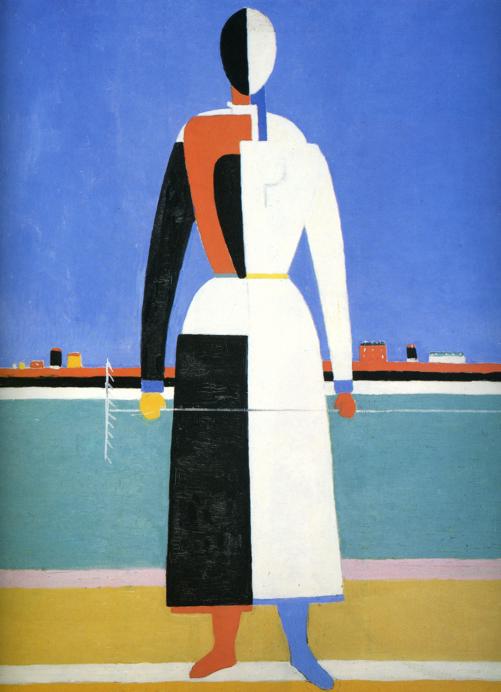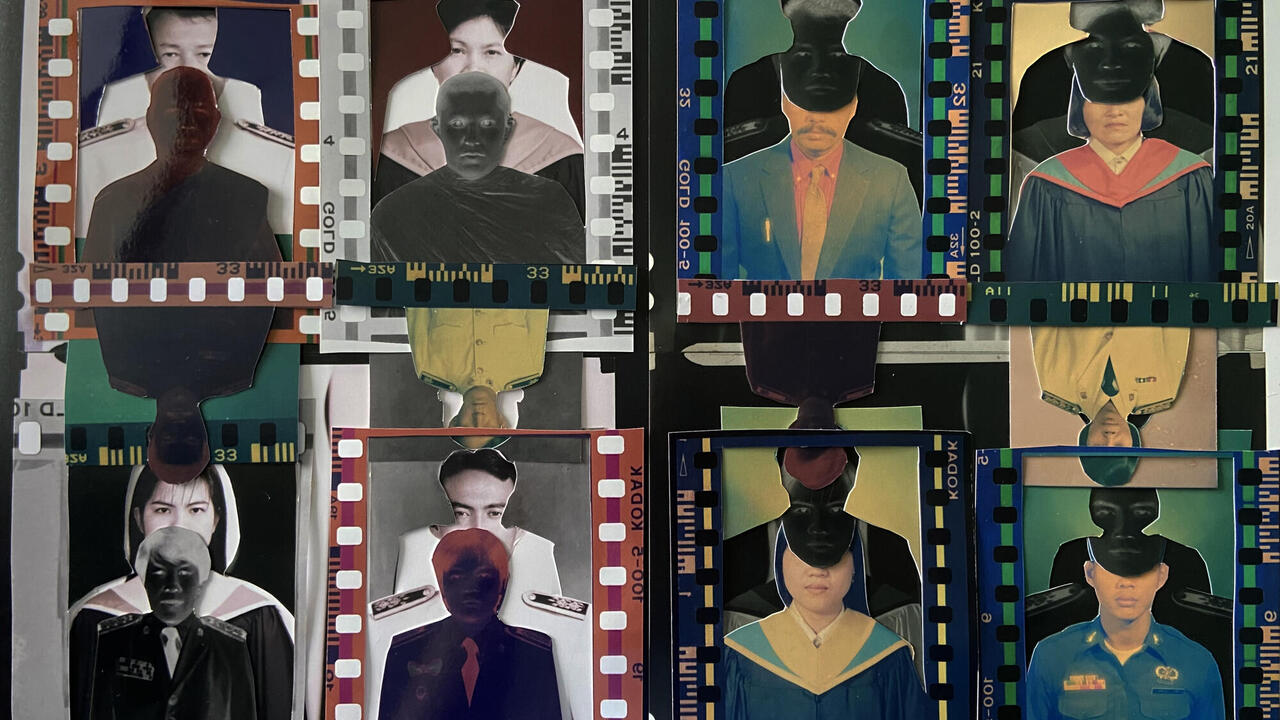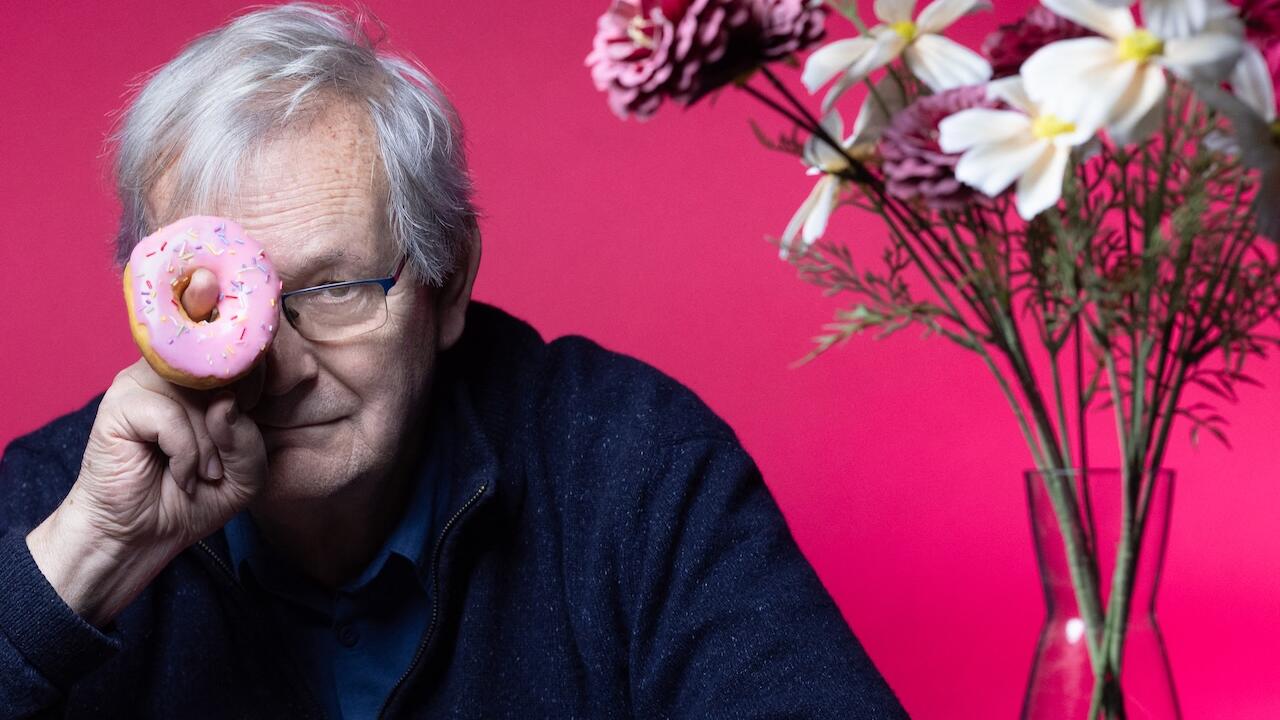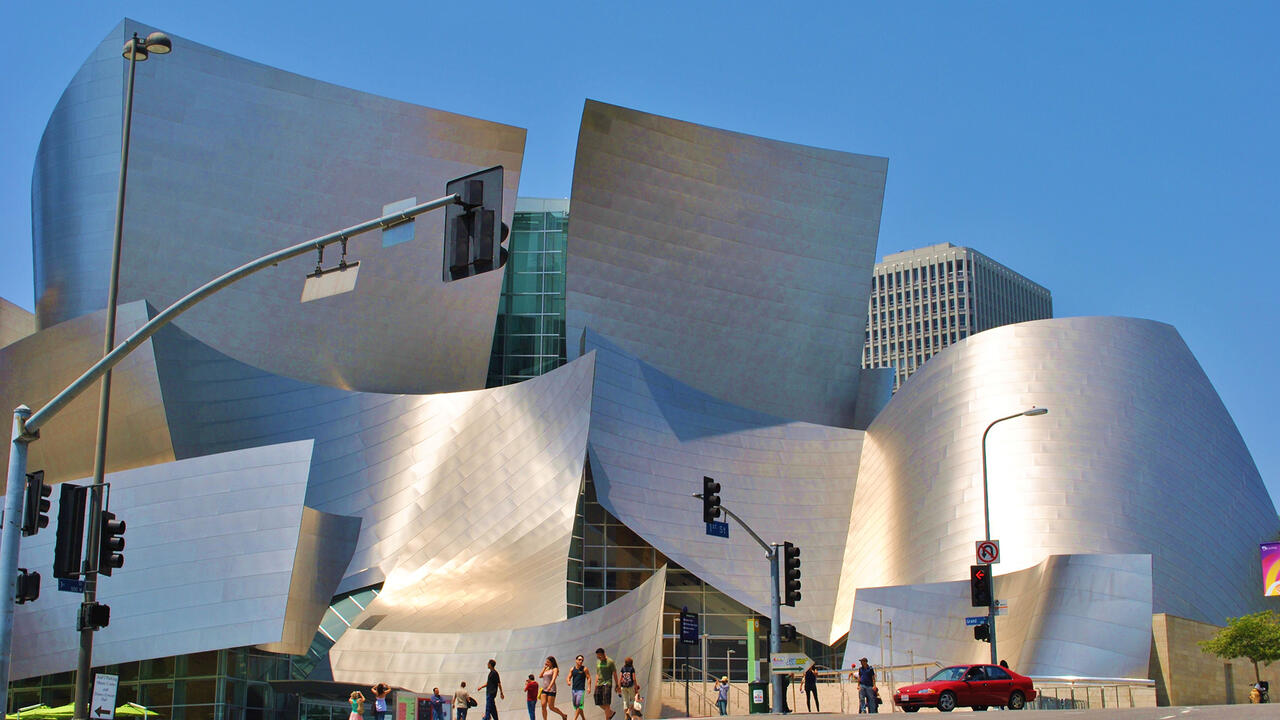Was Malevich an Absurdist?
Kazimir Malevich, who is the subject of a retrospective at Tate Modern, London, is generally considered a difficult mystic
Kazimir Malevich, who is the subject of a retrospective at Tate Modern, London, is generally considered a difficult mystic

Most scholarly attempts to explain the artist are tinged with a creeping unease – never fully admitted to – regarding the supposed inscrutability of his works and writings. Why is that the case? Is it the leaden seriousness? Heaviness really does sometimes pull so hard at his writings that anyone schooled in dialectics might actually be tempted to assume the opposite: what seems so heavy could in fact be light – absurd exaggerations indicating parody. Hold on a minute: Malevich as an artist guided by notions of the absurd?
Malevich began his artistic career with impressionistic, symbolic, fauvist paintings. His pictures of Russian peasants adopted elements of icon painting, before he moved on to cubist, cubo-futurist and so-called ‘alogic’ pictures. In keeping with the modernist credo of progress, these works have often been presented as a linear sequence of individual styles. From 1910, if not before, however, Malevich was painting in several styles at once. There are cubist works from 1911 – not only from 1913, as most exhibitions have tried to suggest – and during the same period he also produced the peasant paintings, and alogic pictures.
Malevich was not the only Russian artist to take this unusual approach. As a major 1913 retrospective of the then pre-eminent painter Natalia Goncharova in Moscow showed, she too painted in several styles simultaneously: impressionist, saints after icons, portraits in the style of Japanese woodcuts, strange cubist statues based on Scythian legends. And she did this deliberately, as the critic Ilia Zdanevich stated in a lecture given during the exhibition, in order to undermine the progress-based claim to hegemony and leadership being exerted by Modernism as it spread from the West.1
In Moscow at the time, a whole generation of young artists, poets, musicians and scholars was revolting against the Western model of linear progress and modernization. Their allegation was that this model served as an intellectual justification of Western culture’s claim to superiority over all other cultures, ethnicities and religions. The revolt was accompanied by an increased appreciation of Russian tradition as embodied in icons as well as in the oral tradition of fairytales, songs, incantations and sayings. The tendency was expressed not least with deliberately provocative statements such as the following one by Goncharova: ‘Now I am going to shake the dust from my feet and distance myself from the West, as I consider its levelling attitude to be superficial and insignificant. My path points towards the origin of all art – towards the East. The art of my country is far deeper and above all far more important than anything I know in the West.’2 Remarks by Malevich himself reveal a similar spirit: ‘It is commonly said that Tsar Peter deservedly came to be called “the Great” because he smashed a hole into the non-objective cube towards the West, throwing open a window to the light. I on the contrary accuse him of having destroyed unity by letting in a destructive culture, opening the window to a highly dubious and suspicious light.’3
Many Russian artists of the time – amongst them an unusually large number of women – considered Russia’s own traditional art to be a priceless source of potential renewal. As Ivan Punin, the most influential theorist before the October Revolution of 1917 and a lifelong friend of Malevich explained in 1913, in an article entitled ‘The Paths of Russian Contemporary Art and Icon Painting’: ‘We believe that the icons, in their great and living beauty, will lead contemporary art to achievements that will differ decisively from those experienced in recent decades by European art.’4
Aiming to subvert the dominance of Western culture, the Moscow artists adopted a strategy of the provocatively absurd. Beginning in 1912, Goncharova would stroll down Moscow’s luxurious Arbat Street painted in gaudy colours. In the evenings, she performed with her partner Mikhail Larionov at Cabaret No. 13.

These events were a wild mix of manifestos, singing and shouting, during which the performers painted each other and the audience, who were sometimes also spat on. These were already Dadaist spectacles of the kind staged three years later, in 1916, by Hugo Ball, Emmy Hennings, Tristan Tzara and Marcel Janko, at the Cabaret Voltaire in Zurich. Malevich admired Goncharova for her crude style of painting Russian peasants, but also for her performances. He, too, would turn up at openings with his face painted, sometimes with a yellow wooden spoon sticking out from his jacket pocket. As late as 1923, at the opening of his own exhibition in Warsaw, he provocatively wore bright purple tights and a purple women’s stocking as a tie around his neck.
At the same time, the poet Velimir Khlebnikov began giving readings – nowadays one would call them performances – during which he recited, shouted and sang his texts, accompanied by wooden spoon percussion, and declared himself Chairman of the Globe (something Hugo Ball would also later do). Khlebnikov, who was the driving force in Moscow at this time and whom, with his pure sound poems, were a role model for Malevich’s own ideas of the non-objective or non-representational, published a series of manifestos with his friend Aleksei Kruchenykh that bore titles like ‘A Slap in the Face of Public Taste’ and for which Malevich was invited to provide illustrations. In 1913, with the manifesto ‘On Artworks’, he founded Zaum (literally ‘beyond mind’, variously translated as transreason, transration or beyonsense), a movement that aimed to subvert Western pictorial concepts (shaped by a rational relationship between image and reality) by means of elements that elude reason – dreams, the unconscious, illusion, faith and laughter. As Malevich wrote to the composer Mikhail Matyushin during preparations for the staging of his opera Victory Over The Sun: ‘We have now come to reject reason. We have rejected it because another is ripening within us that can, in comparison with that we have rejected, be called zaum and that also constitutes laws and possesses meaning. Only when we have realized this can our works be founded on a truly new, transrational law.”5
Victory Over The Sun, composed by Matyushin, with a libretto Kruchenykh, a prologue by Khlebnikov, and with sets and costumes by Malevich, premiered in 1913. During the piece, the audience was subjected to barely intelligible screaming, deafening sounds, blinding lights and even the spit of individual actors, in a show of absurdity outstripping even the later plays of Samuel Beckett. This raises the question of whether it was actually intended as a tribute to Futurist modern rationalism, as it has often been assumed – or whether it was in fact a parody?

During the preparations for this spectacle, which can be seen as the high point of the Zaum movement, the motif of the square appeared for the fist time in Malevich’s work, as part of a stage set. Subsequently, monochrome squares of colour appeared in his Zaum paintings, which he also referred to as ‘alogic’ pictures. They include the painting Lady at the Poster Column (1914) in which two squares (yellow and pink) appear against a background of geometrical constructions and letters. But the key work here is the painting Partial Eclipse in Moscow (1914-1915) that includes not only a collaged (but crossed out) newspaper photograph of the Mona Lisa (that icon of Western pictoriality) but also a white square overlaying a black square. This painting from Malevich’s Zaum period is where we must look for the roots of his square – and not, as previously assumed, in his pictures painted in the style of Western Cubism.

A small drawing from 1915 helps to shed more light on Malevich’s approach. It shows a rectangular outline into which the word ‘derevnja’ (village) is inscribed. Under this figure, Malevich notes that it is better to write the word ‘village’ than to paint a village because the word immediately enables anyone to imagine a village in all its details. The drawing is entitled Alogisme 29: Village. As well as anticipating the conceptual art of the 1960s, it also shows that Malevich did not share the Western modernist view of non-objective – he never used the term ‘abstract’ – pictures as pure abstraction. The possibility of figurative associations was ever-present, and many of Malevich’s ‘suprematist’ paintings have titles to that effect.

The red square on white ground that he painted in 1915 has the full title Red Square: Painterly Realism of a Peasant Woman in Two Dimensions and not, as the usual abbreviation has it, just ‘Red Square’. Another painting with a black and a red square from the same year is called Painterly Realism of a Boy with a Knapsack – Colour Masses in the Fourth Dimension. Combined with the non-figurative forms, these titles, too, testify to a playfully absurd approach on the part of the artist.

Malevich also used the ‘suprematist’ label for his figurative pictures painted after 1928, most of which depict peasant women. It is thus quite simply wrong when, as in almost all exhibitions to date, these paintings are shown separately from the non-objective works. For even during this period Malevich was also painting non-objective pictures, and it is outrageous when, for example the title of the figurative painting Suprematist Transformation of a Peasant Girl is suppressed and the work from 1930-32 is simply labelled as ‘Woman With Rake’, as in most publications and catalogues to date. One can only marvel at the insolence with which mainly Western Malevich scholars ride roughshod over the original titles.
But it is not only the titles that point to an idiosyncratic, at times absurd element. Following the example of Khlebnikov, who invented new words, included mathematical formulas and flouted grammatical rules, Malevich’s texts are full of absurdist neologisms and expressions, images and similes, many of which are lost in the often unsatisfactory translations.
Malevich concluded his artistic output with realistic portraits of his mother, his wife and his daughter. In almost identical style, he had also painted his father – but in 1902 (a picture from the Khardzhiev Collection). Malevich had arrived back at his point of departure. Perhaps this loop, and his re-dating of paintings, can also be understood as an absurd project in itself, intended as a parody of the belief in linear progress.
This view is supported by the fact that Malevich had a long-standing friendship with the literary theorist Mikhail Bakhtin who, not least inspired by what was going in art, studied the culture of laughter, Russian folk tradition and the Middle Ages, developing his now renowned theory of laughter and parody as a strategy of revolt. To this one can add the little known fact that during his 20 years as director of the State Institute for Artistic Culture in Leningrad, Malevich provided performance space for the artists and writers of the OBERIU group, also known as ‘Absurdists’, who carried on in the Dadaist vein of Goncharova, Larionov and Khlebnikov.
Those involved in these performances included Vladimir Tatlin who in 1923 succeeded in staging Khlebnikov’s Dada play Zangezi at this Institute. Khlebnikov himself was already dead, starved to death while fleeing arrest in 1922. Tatlin’s work, too, is marked by strong Dadaist and absurd elements. Malevich’s friend, the theorist Punin, had already noted this in his 1921 monograph ‘Tatlin (Against Cubism)’.6 The artist Ivan Puni even described Tatlin’s Monument for the Third International (1920/21) as an ‘ideological absurdity’.7 The absurdists who performed at Malevich’s institute really did wish to undermine the credibility of the rapidly spreading, supposedly scientific materialism with their absurd actions. To one of them, the absurdist Daniil Kharms, Malevich gave a copy of his own 1922 treatise ‘God is not defeated’ – which in this context can only be understood as an angry parody on historical materialism’s exclusive claim to truth. The dedication he wrote to Kharms in his book reads: ‘Go forth and hinder progress’.8
When Malevich died in 1935, Kharms read his poem ‘On the Death of Malevich’ at the funeral, a gesture understood by most of those present as a sign of revolt. It was to be the last public appearance by this poet and OBERIU co-founder before he disappeared forever into the prison system.
Translated by Nicholas Grindell
1 Natalia Goncharova, exhibition catalogue, Opelvillen, Rüsselsheim, Kunsthalle St. Annen, Angermuseum Erfurt 2010, p. 15.
2 Natalia Goncharova, Manifest 1913, quoted from E. F. Kowtun (ed.), Istorija knižnavo iskusstva (a history of the art of books), Moskow 1989, p. 32.
3 Kasimir Malevich, _Suprematismus – die gegenstandslose Welt_(Suprematism – the non-objective World), Cologne 1962, p. 99.
4 Ivan Punin, ‘Puti sovremennovo iskusstva i russkaja ikonopis’ (The Paths of Russian Contemporary Art and Icon Painting), in: Apollon, Moskva 1913, Volume 10, p. 50.
5 Letter to Mutjuschin, in: Sieg über die Sonne (Victory Over the Sun), exhibition catalogue, Berlin 1983, p. 39.
6 Cf. Ivan Punin, Tatlin (protiv kubisma) (Tatlin, against Cubism), Petrograd 1921.
7 Ivan Puni, Sovremennaja životopis (Contemporary Art), Berlin (Frenkel’) 1923, p. 31.
8 According to the executor of the Kharms estate, Michael Meylac.



















